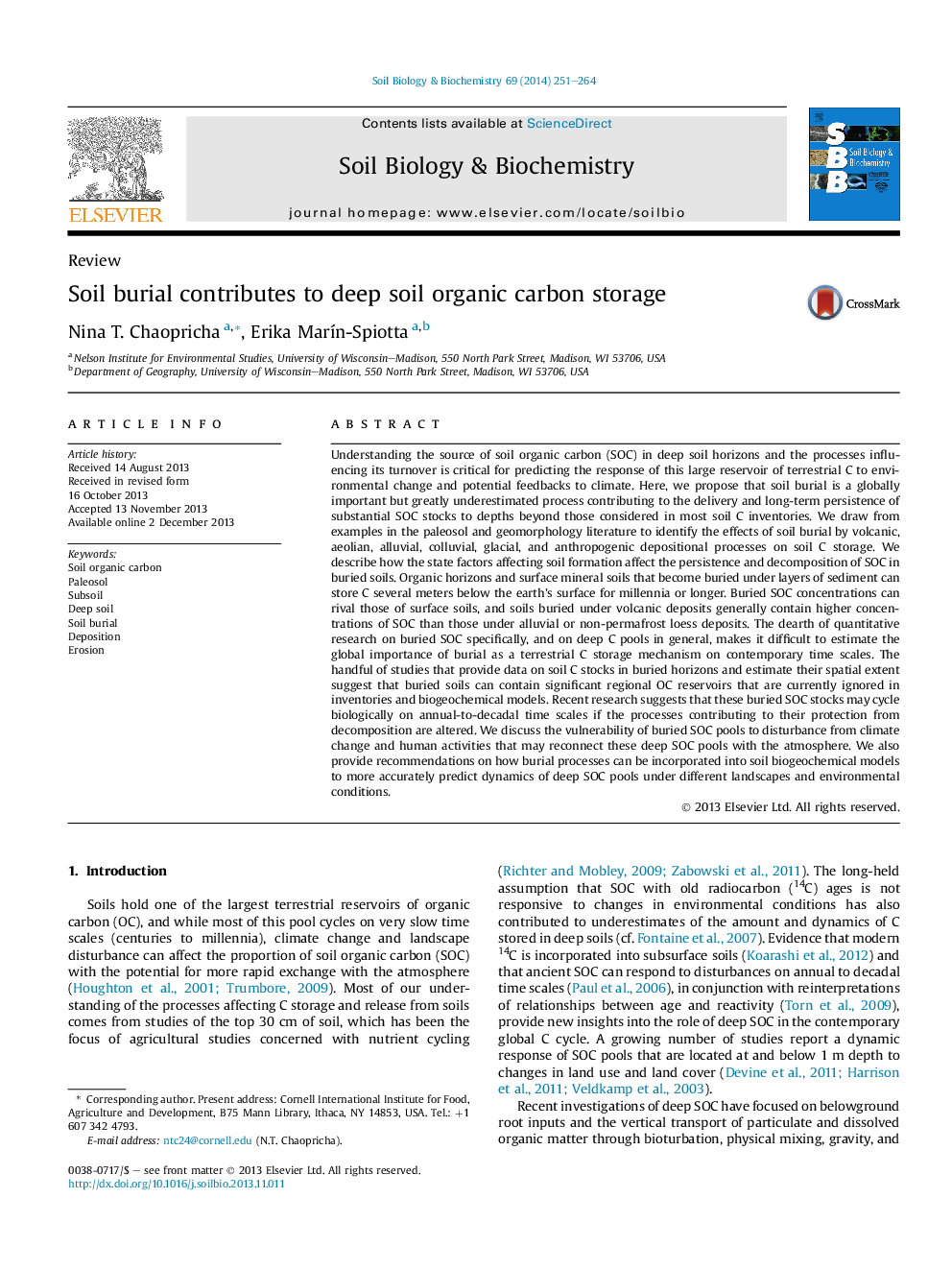| Article ID | Journal | Published Year | Pages | File Type |
|---|---|---|---|---|
| 2024735 | Soil Biology and Biochemistry | 2014 | 14 Pages |
•Soil burial is an important mechanism for stabilizing SOC at depth.•Burial process, rate, and sediment material influence SOC persistence.•Climatic and land use changes can release deep buried SOC to the atmosphere.•Including depositional processes in models can improve predictions of SOC dynamics.
Understanding the source of soil organic carbon (SOC) in deep soil horizons and the processes influencing its turnover is critical for predicting the response of this large reservoir of terrestrial C to environmental change and potential feedbacks to climate. Here, we propose that soil burial is a globally important but greatly underestimated process contributing to the delivery and long-term persistence of substantial SOC stocks to depths beyond those considered in most soil C inventories. We draw from examples in the paleosol and geomorphology literature to identify the effects of soil burial by volcanic, aeolian, alluvial, colluvial, glacial, and anthropogenic depositional processes on soil C storage. We describe how the state factors affecting soil formation affect the persistence and decomposition of SOC in buried soils. Organic horizons and surface mineral soils that become buried under layers of sediment can store C several meters below the earth's surface for millennia or longer. Buried SOC concentrations can rival those of surface soils, and soils buried under volcanic deposits generally contain higher concentrations of SOC than those under alluvial or non-permafrost loess deposits. The dearth of quantitative research on buried SOC specifically, and on deep C pools in general, makes it difficult to estimate the global importance of burial as a terrestrial C storage mechanism on contemporary time scales. The handful of studies that provide data on soil C stocks in buried horizons and estimate their spatial extent suggest that buried soils can contain significant regional OC reservoirs that are currently ignored in inventories and biogeochemical models. Recent research suggests that these buried SOC stocks may cycle biologically on annual-to-decadal time scales if the processes contributing to their protection from decomposition are altered. We discuss the vulnerability of buried SOC pools to disturbance from climate change and human activities that may reconnect these deep SOC pools with the atmosphere. We also provide recommendations on how burial processes can be incorporated into soil biogeochemical models to more accurately predict dynamics of deep SOC pools under different landscapes and environmental conditions.
